
Boosting Your Memory – Can Flavonoids Prevent Forgetfulness?
A healthy diet should be like a rainbow, consisting of various fruits and vegetables such as red strawberries, green spinach leaves, yellow peppers, which give you all the nutrition for day-to-day activities.
But did you ever wonder where these colors come from?
The colors of your fruits and vegetables often come from potent phytochemicals (chemicals found in plants) called as flavonoids. Now a large study from Harvard published in the journal Neurology (July issue) states that flavonoids may play a role in protecting cognition too.
The Study
Scientists evaluated collected 20 years self-reported diet data and health information for over 77,000 middle-aged men and women. The data included the frequency of participants having flavonoid-rich foods and reporting cognition related changes in their 70s, such as difficulties faced in:
- Understanding instructions
- Finding routes around familiar streets
- Following a TV show plot, or group conversation
- Remembering short lists of items (groceries list), or events that occurred recently
- Remembering things one after the other, over a span of few seconds
The study included six classes of flavonoids for calculating the participant’s cognitive ability:
- Flavones (e.g., luteolin found in green chile peppers or celery)
- Flavanones (e.g., naringenin found in grapefruits or oranges)
- Flavonols (e.g., quercetin found in onions and kale)
- Anthocyanins (e.g., cyanidin found in blackberries and red cabbage)
- Polymers (e.g., theaflavins found in black tea)
- Flavan-3-ol monomers (e.g., catechins found in red wine and strawberries)
Study Observations
Cognitive functioning is significantly affected by factors such as weight, age, physical fitness, intake of non-flavonoid nutrients, depression and alcohol intake.
The research concluded that people with the highest flavonoid intake in their diets had 19 % less chances of developing troubles like memory loss and thinking difficulty as compared to those with the lowest consumers of flavonoids.
Dr. Walter Willet, study author and professor of epidemiology at Harvard T.H. Chan School of Public Health said that the results are exciting as they show that people with high intake of flavonoids prevented or slowed down decline in memory and other cognitive facilities in elderly.
Earlier consumption of flavonoid-rich foods showed a protective effect on the brain. Lead author Dr. Tian-Shin said that even people who began consuming flavonoids late in life noticed their benefits.
However, the study was conducted as an observational study. It relied on people remembering their diets and cognition changes, and the proof was not conclusive that flavonoids can keep older people sharp.
However, there is a link between flavonoid consumption and cognitive health benefits seen even in smaller or shorter-term studies.
Flavonoids Superfoods
Certain flavonoids have shown protective effects on the brain by lowering self-reported cognitive decline as follows:
- Anthocyanins by 24%
- Flavones by 38%
- Flavanones by 36 %
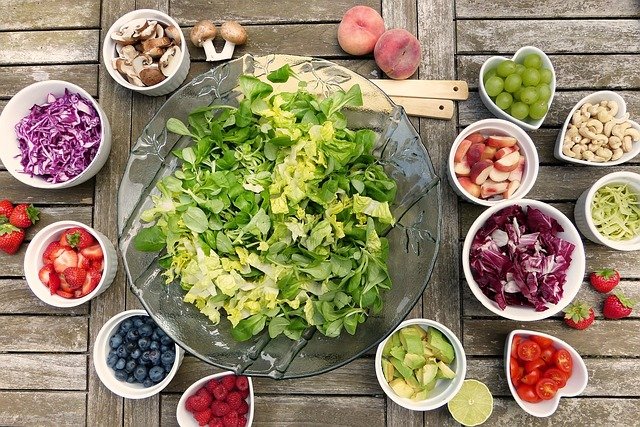
The vegetables and fruits associated with maximum improvement in cognitive functioning listed from highly effective to moderately effective are:
- Brussel Sprouts
- Strawberries
- Cauliflower
- Raw Spinach
- Sweet potatoes
- Blueberries
- Orange winter squash
- Cooked spinach
- Cooked carrots
- Peaches, plums and apricots
- Tomato juice
- Green, yellow and red bell peppers
- Broccoli
- Cabbage
- Tomato sauce
- Lettuce
- Tomatoes
- Celery
- Beets
Other beneficial foods were potatoes, onions, apples, pears, bananas, grape, raisins, tea, white wine, raw carrots and red wine.
What Is The Magic Content in Flavonoids?
Flavonoid activity for protecting cognitive functions are still in research. t However studies have shown that flavonoids are potent antioxidants that can prevent inflammation and accumulation of amyloid, a characteristic feature of Alzheimer’s disease.
Antioxidants also play a significant role in the following situations:
- Treat inflammation and prevent tumour growth
- Lowers blood pressure by maintaining the health of blood vessels
- Antioxidants increase the production of brain-derived neurotrophic factors, which are nothing but chemicals that help in brain repair, strengthen the connection of nerve cells and promote growth of new brain cells, and enlarges the size of the hippocampus (a part of the brain that aids memory storage and retrieval)
Flavonoid Goals To Work On
Flavonoids have shown so many potential benefits. So what is the right amount of flavonoids you should include in your diet?
In the study, flavonoid diet intake ranged from as low as 150 milligrams (mg) per day to as high as 620 mg per day. However, keeping track of flavonoid consumption can be tricky as it varies significantly between foods. For example, half a cup of peppers contains about 5 mg of flavones, and a half cup of blueberries contains 165 mg of anthocyanins.
So for starters, start having differently coloured fruits and vegetables in your regular diet. The earlier you start, the better the results will be.
Based on recent evidence, the most effective combination is including two servings of fruits and three servings of vegetables per day. You can also try to reach a goal as a five-a-day fruit/vegetable.
This goal will help you enjoy all the good fruits like blueberries, apples, strawberries, bananas, and oranges which are potentially helpful for your brain.
Dr. Deborah Blacker, study co-author and professor and deputy chair of epidemiology at the Harvard T.H. Chan School of Public Health concluded that this diet can be called as ‘eating the rainbow’.
So the rainbow diet is a healthy as well as a delicious diet, for a healthier and maybe sharper you even when you are 70!

Understanding Sudden Death In Young Athletes
The death of our beloved movie superstar Puneeth Rajkumar stunned his fans. A person who was so physically fit suddenly passing away was a shock to all, and just as confusing.
How does someone who is so physically fit die so suddenly?
Surprisingly, this sudden death in young individuals is not something new. Athletes dropping dead during a game is well heard of. The world of football has seen many.
I thought I would touch upon, in brief, why young and fit individuals die suddenly, and what steps you could take to screen yourself and pick any warning signs up early.
Definitions
Young athletes could be any age, though for the purposes of this discussion, we will have 2 categories – those below 35 years, and those above.
Similarly, there are those who are competitive athletes i.e. those who participate in competitions with a goal to win, and those who are recreational athletes who exercise for fitness and fun.
Heart Attack Vs Cardiac Arrest
A heart attack is a condition where the heart artery is blocked by a blood clot. This deprives the heart of blood, leading to damage to the heart muscle. The heart is still beating and the patient is still alive.
A cardiac arrest is a condition where the heart stops beating. Basically, the patient is dead.
A heart attack can lead to a cardiac arrest.
How Common Is Sudden Death In Young Athletes?
In young athletes, statistics suggest that sudden death occurs in around 1 in 1 lakh individuals a year. In older athletes, this is around 1 in 7000.
However, these are not hard facts but rather estimates.
Causes Of Sudden Death
I have listed below some of the common causes of sudden death in athletes.
1. Alteration In The Heart Structure
Sometimes, the heart is not built the way it should be. There may be problems with how the muscle is built, or there may be a problem with how the electrical wiring is within the heart muscle tissue.
These changes in structure can lead to the heart beating in an extremely fast and erratic manner.
For example, some athletes may develop a ventricular tachyarrhythmia, or an irregular, fast beating of the bottom chamber of the heart. Ventricular fibrillation is one such life-threatening rhythm problem where the heart beats in a disorganized manner at a rate that exceeds 400 beats a minute. Ventricular tachycardia is a related condition with similar risks and outcome.
Below is the link to a video of Hank Gathers, a semiprofessional basketball player who collapsed during a game despite being in top form and just having scored a basket.
If you are a sensitive person, then I would advise you not to watch the video. It is freely available on YouTube here.
Besides beating very fast, the heart may beat at an exceedingly slow rate, or even flatline. This is called bradyarrhythmia.
Other reasons include holes in the heart that were not detected at birth.
A sudden tear of the largest blood vessel in the body, called aortic dissection, can also lead to sudden death.
2. Coronary Disease – Heart Artery Blockages
This is seen in athletes above the age of 35 years.
As we age, there may be soft plaques of fat that have been deposited in the heart arteries over years. These begin forming at a very young age, and increase in size at a varying pace over time.
During aggressive exercise, these plaques can break off if they are unstable. They then travel down the blood vessel and block it completely, leading to a heart attack.
In the medical world, we call this plaque rupture. It is a cause for sudden death in people who have pre-existing narrowing in their heart arteries.
There are many factors that contribute to the formation of these plaques. Smoking, high blood pressure, diabetes, a strong family history of heart disease and high cholesterol are the common risk factors.
Coronary disease can be detected to some extent with tests such as a treadmill test. But not all narrowing in arteries can be detected this way.
I have written a detailed article on treadmill testing and what to do if it is a positive test elsewhere.
I have discussed this aspect a little later in the ‘screening’ section below.
3. Electrical Problems
The heart pumps because of electricity that flows through it. However, sometimes the electrical flow is faulty. Think of it as faulty wiring.

When the wiring if faulty, any strenuous activity can lead to erratic heart beating as the wires cannot handle the extra load. This may lead to sudden death.
Problems with electrical flow can be detected by a simple ECG.
4. Change In The Heart Muscle Thickness
The human heart is built in a very specific way. Each of the walls of the heart, the valves and other internal structures are of a particular thickness and serve a specific function.
However, if the thickness of the heart changes, then the heart may not function normally under stress. This can be a cause for sudden death.
One such condition is called Hypertrophic cardiomyopathy (HCM), a condition where the heart muscle is abnormally thicker than normal.
HCM is a very common cause of sudden death in athletes. It is often undiagnosed.
Similarly, if there is a hole in the heart (a birth defect), then the heart may not be able to handle the stress of exercise.
If there is a defect in the way a heart valve opens and closes, it can stress the heart even during minimal exercise.
A rare cause of sudden cardiac death is Arrhythmogenic right ventricular cardiomyopathy. This is a condition where the right side of the heart is replaced with fat tissue that poorly conducts electricity. It is often missed during clinical evaluation, though can be picked up on an ECG and a cardiac MRI scan.
5. Heart Muscle Inflammation – Myocarditis
Myocarditis means ‘inflammation of the heart muscle’, and is a potentially fatal condition. Those with suspected myocarditis are advised not to exercise for at least 3 to 6 months after the diagnosis is made.
Viral infections, including COVID, have been linked to myocarditis. I have always advised individuals with fever or an active infection to avoid exercising during the infection and even for a couple of weeks after recovering to prevent myocarditis.
There are a handful of case reports of COVID vaccine causing myocarditis as well.
When the heart muscle is inflamed, it ceases to function normally, becoming weak and enlarged. Electrical abnormalities ensue, leading to irregular heart rhythms and sudden cardiac death.
If you are ill, do not exercise. Rest is the best treatment.
You can read about diagnosis of myocarditis in more detail here.
6. Rarer Causes
There are condition such as congenital long QT syndrome, Brugada syndrome and early repolarisation syndrome that can cause sudden cardiac death. I am not discussing them here as they will definitely confuse you.
Screening
If you wish to know your risk, visit your cardiologist. That’s the first step.

A thorough history taking and physical examination itself will help risk stratify you. Your background history of high blood pressure, diabetes, family history of heart disease (or sudden death in a family member below the age of 50 years) and high cholesterol will help determine your risk.
A detailed examination to see if there are any heart murmurs or signs of your heart being weak will be conducted.
The role of investigations as a screening tool has been debated. Some suggest that tests may be futile and rarely pick up problems with the heart.
However, I personally feel differently.
A basic ECG, echocardiogram and a treadmill test, along with a blood profile to evaluate your hemoglobin, lipids and blood sugars can add some value in determining your risk.
A few years ago, I took an automated blood pressure machine to a local gym I used to visit, just to check the blood pressure of every person walking in through the doors. Over a 2 hour period, I recorded the BP of around 26 people.
Of the 26 people, I detected 2 people having a very high blood pressure. One individual aged 33 years had a BP of 220/120, and was completely oblivious to it. He was a fairly fit guy, would work out for an hour 4 times a week, and was not overweight. He even lifted weights.
I made him rest for 30 minutes and manually checked his BP again. It was the same.
I reviewed him in clinic 2 days later. It was almost the same. Conducted a home blood pressure recording test, and he averaged 190/100 on a rest day.
Not always will you know when you have a cardiac problem. Many times it is silent.
Besides the above tests, I have sometimes advised a CT coronary angiogram for patients who participate in running and intensive sporting activities.
Do The Tests Rule Out Sudden Death?
Unfortunately, no. Not all tests can predict whether you will have trouble when exercising.
It will, to some extent, determine if you are low, intermediate or high risk of sudden death.
Repeat screening once every 2 years may hold value. Those with any detected abnormalities may require annual screening.
Your doctor will guide you.
Warning Signs
If you notice any chest pain, breathing difficulty or thumping in the chest now and again when at rest or when exercising, see your doctor and get evaluated.
Never ignore what your body tells you. And for God’s sake, don’t Google all the time. Visit an expert.
Closing Remarks
Sudden cardiac death in young athletes is rare. But when it happens, it hits us hard. Taking the right steps early may help prevent this problem.
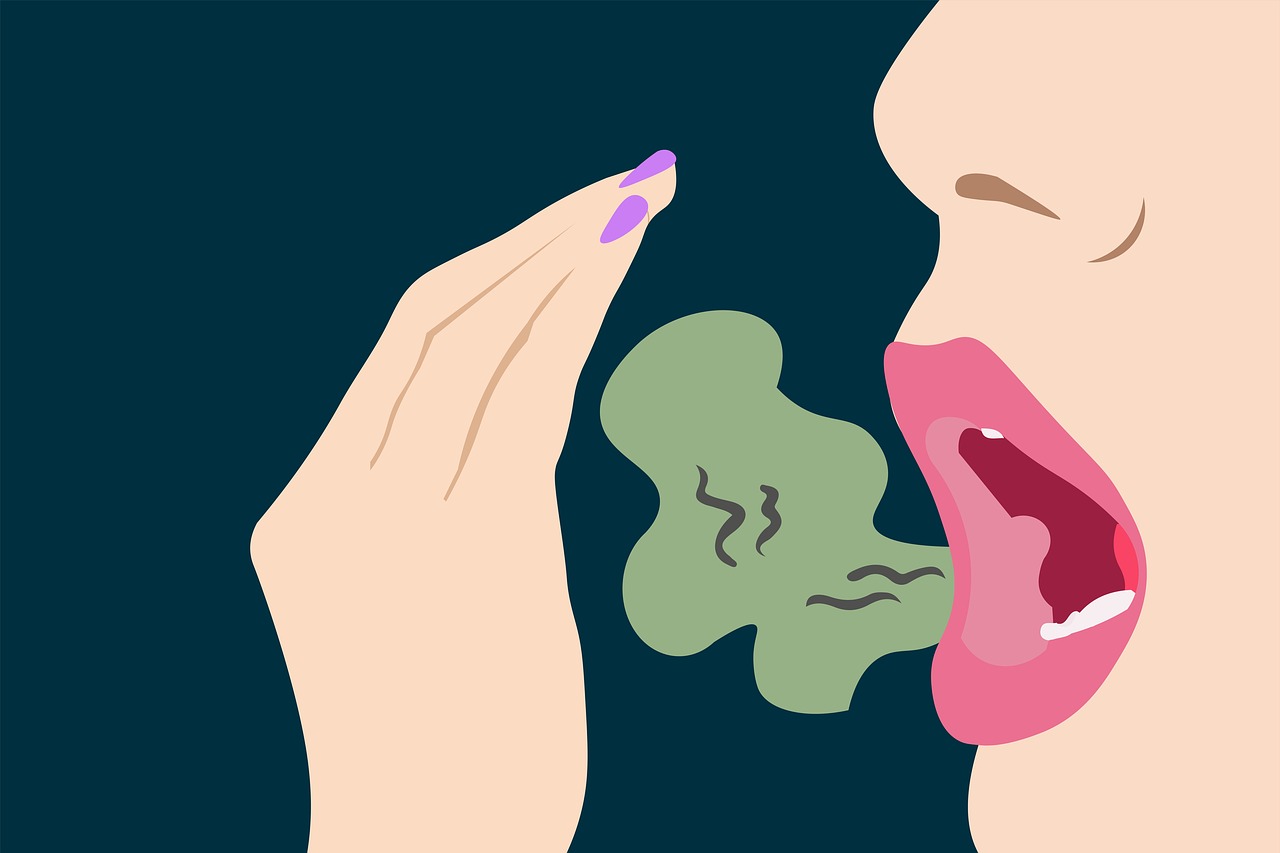
Is Bad Breath Bothering You? Here’s What You Can Do.
Bad breath or halitosis is an embarrassing problem and a great selling point for literally every toothpaste and mouthwash on the market. Around 50% of the population globally suffers from this condition.
What Causes Bad Breath?
Halitosis is mostly due to volatile molecules that originate from the mouth or nearby structures. These molecules can include a variety of amines, short-chain fatty acids, nitrogen-containing compounds, and even hydrogen sulfide.
Bacteria in the oral cavity are responsible for the production of these gases which are released when bacteria feed on food material in the mouth. If you have gum disease or dental caries, bacteria grow here as well and lead to bad breath.
In fact, 80-85% of cases are due to causes within the mouth.
If you have poor saliva production (a condition called xerostomia), then your breath can smell bad as a consequence of this. A coated tongue, not brushing teeth regularly and dentures is another cause.
But halitosis can also originate from non-oral sources. Those people who suffer from acid reflux disease, tonsil infections, lung infections, and some forms of gastrointestinal cancer are prone to bad breath.
High alcohol intake and smoking also affect breath.
Certain foods such as garlic, onion, radish, and pickles can lead to foul-smelling breath as well.
You May Not Have Bad Breath
There is a condition called ‘delusional halitosis’, where you believe you have stinky breath, but everyone around you thinks it’s fine. It is sometimes called imaginary halitosis.
Believe it or not, TV advertising of oral hygiene products (remember the old Close-UP toothpaste ads – you need a fresh breath to get the girl!) has led to an increased number of cases of delusional halitosis.
Some people even develop a morbid fear of bad breath, called Halitophobia. It is seen in 0.1 – 1% of the population. Such individuals may need counseling if the fear affects their quality of life.
Why Do We Wake Up With Smelly Breath?
Every morning you may find that your breath stinks. This is called physiological halitosis and is a natural phenomenon.
It happens because, throughout the night, your saliva is stagnated inside your mouth. Any food particles undergo a mild decaying process and are infected by any bacteria in the mouth. This releases smelly gases. The dead cells that line the gums also are released into the saliva, leading to bad breath.
Assessment Of Halitosis
Bad breath is evaluated through a test called organoleptic measurements. Here a patient holds their breath for a short while and then breathes out through a pipette. The doctor/examiner smells the breath from 20 cm away and scores it according to a scale.
There are other tests as well that measure gas levels in the breath. A detailed discussion on this is out of the scope of this article.
Treatment
If you suffer from halitosis, then see a dentist first. It is likely to be an oral cause.
Chewing gum may help as it improves saliva production. Good oral hygiene is essential.
Brushing teeth twice daily, gargling after meals, and using mouthwash helps mask the smell. Listerine is particularly helpful.
For some of my patients with bad halitosis, I recommend chlorhexidine mouth rinses. It is an effective killer of bacteria in the mouth. I don’t recommend it long-term as it can stain the teeth.
Clean your tongue when you brush your teeth. This can lower the smell by more than 40%. Using a tongue cleaner is better than using your toothbrush.
Flossing also helps get rid of germs between teeth. Always floss before you brush your teeth.
Patients who suffer from delusional halitosis may require cognitive behavioral therapy. There are many modalities of treatment available now that help one get over the fear of bad breath.
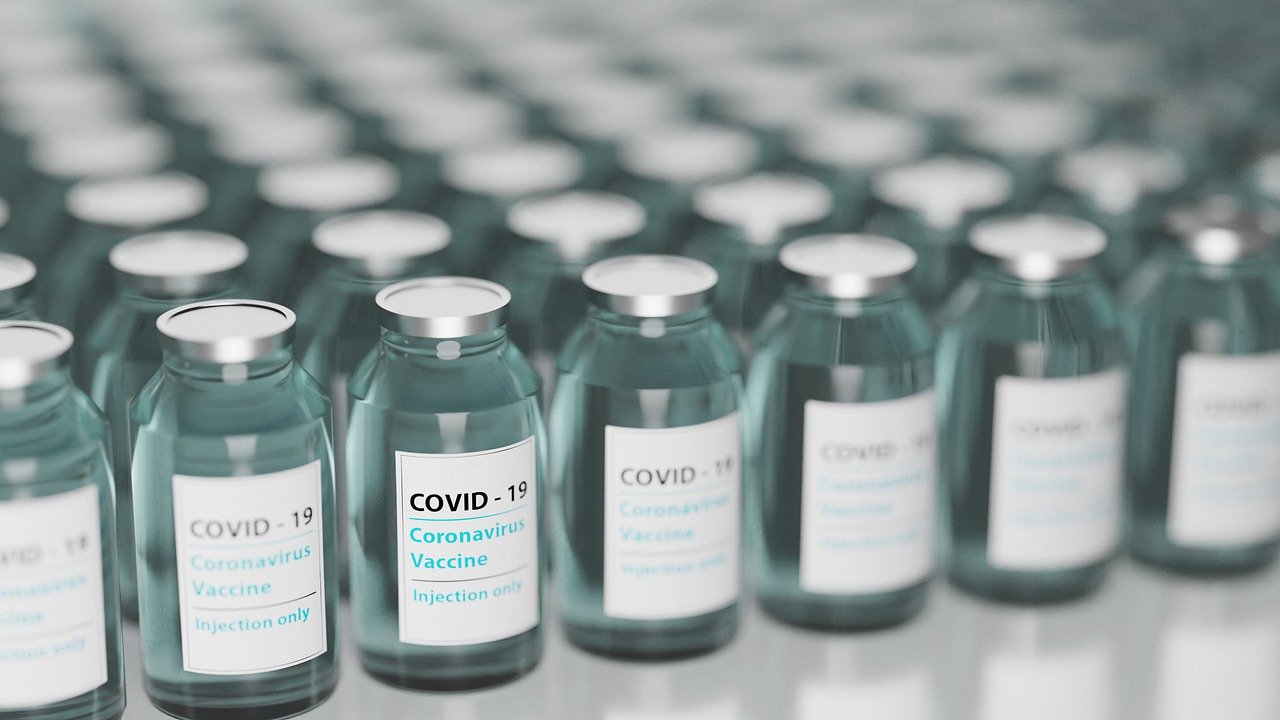
Should I Take The COVID Vaccine? Your Questions Answered.
In the last few days, I have received a number of calls about whether or not the COVID-19 vaccine should be taken.
I am not surprised by this, as this is naturally a concern to many that have been approached by the governing bodies about taking the vaccine.
I thought I would address some of the common questions that are being asked about the vaccine.
Please note that some of the information below may be relevant to the state of Karnataka (where I hail from), so do check with your local governing body about rules and regulations they may have.
What Are The Vaccines Available In India?
I think you probably know the answer to this question, but nonetheless, here goes.
There are currently 2 vaccines available in India:
- Covishield
- Covaxin
Covishield is manufactured by AstraZeneca, while Covaxin is manufactured by Bharat Biotech. The government is currently administering both these vaccines at select centers across Karnataka and the rest of the country.
Which Vaccine Should I Take?
Currently, there is no choice given to the public about which vaccine they should take. Each center has stocked the vaccines given to them by the government, so if you are allotted a center then you will have to take the vaccine they are offering there.
Please note that the decision to take the vaccine is entirely VOLUNTARY. You may opt not to have the vaccine if you do not wish to.
How Do I Register For The Vaccine?
Right now, it appears the only way to get the vaccine is to register on the COWIN website or by downloading the app.
The website is https://www.cowin.gov.in/home
Once you land on the website, you will need to register yourself or a family member using a telephone number and an OTP. Up to 4 family members can be registered using a single telephone number.
You may also register using the Aarogya Setu app, where they have included a section for COWIN registration.
I would advise you to read this article on NDTV for step-by-step instructions.
How Is The Vaccine Administered?
Having had both doses, I can tell you that the vaccine will be administered in your left arm (Or right arm if you are left-handed).
If the thickness of muscle in your left arm is very little, they may administer it in the buttocks. I am not aware of any of my colleagues having had such an injection though.

The left shoulder muscle will be cleaned with cotton and some spirit and the injection will be administered.
Honestly, it is no different from any other injections you might have had in your lifetime.
Does It Hurt?
Well, it’s an injection!! It is going to hurt a tiny bit, but it will not bother you!
Afterward, a small number of people may develop shoulder pain which may last a couple of days. I had a little shoulder pain for 2 days after the first shot, but no pain when I had the second shot.
What Are The Side Effects?
Rarely, one may develop side effects from the injection. Common ones are –
- Rash and itching over the site of injection – This will settle with time or with antihistamine medications if needed.
- Pain at the site of the injection – as explained previously
- Fever – Some people who have taken the vaccine may experience fever for up to 24 hours. Paracetamol can help control the fever. Depending on your tolerance, the fever may or may not bother you. The fever may develop the evening of the injection or the following day. There is no need for antibiotics.
- Body pain and fatigue may be a part of the fever. That too settles within 24 hours.
- Nausea can occur. Vomiting is rare. Antacids could help. If nausea is troublesome, then contact your doctor.
- Bleeding – If given carefully, this is highly unlikely. A small amount of blood may ooze out after the injection, but this settles in seconds.
- Blood clot formation – This is extremely rare. Please note that such a complication can be with any intramuscular injection and not just COVID vaccines alone. It may be more prominent in people taking certain kinds of blood thinners.
I Am On ‘Blood Thinners’ – Can I Take The Vaccine?
I guess this is the most commonly asked question. There are 2 types of blood thinners that are prescribed to patients.
- Antiplatelet agents – Aspirin, Clopidogrel, Ticagrelor and Prasugrel
- Anticoagulants – Warfarin, Nicoumadin, Dabigatran, Apixaban, Rivaroxaban
Those who are taking antiplatelet agents can take the vaccine.
Those taking anticoagulants should probably avoid the vaccine due to the risk of blood clot formation within the muscle.
For example, if you are taking tablet Ecosprin or Clopilet, or if you have had a stent or bypass surgery and are on these agents, then you can go ahead and take the vaccine.
If you have a metallic prosthetic heart valve or if you have an irregular heart rhythm and are taking Acitrom, then there is a risk of bleeding or clot formation after the injection.
However, it is not very clear.
Here is what I suggest. Speak to your doctor about whether your anticoagulation must be stopped for a few days, and whether it is safe to do so. You may not be eligible for the vaccine if you should never miss the anticoagulation medicine.
I Have Had COVID Infection Already – Should I have The Vaccine?
Yes, please do!! You are at risk, later on, so better to have the vaccine to protect yourself.
I Have Diabetes. Can I Take The Vaccine?
If your diabetes is well controlled, with your fasting sugars within 130 and postprandial sugars within 180, then go ahead. This is not guideline-based but is just my opinion.
If your diabetes is poorly controlled, then time to get it right! Once controlled and your doctor gives you the all-clear, go ahead and get vaccinated.
Who Should Not Take The Vaccine?
If you are on anticoagulants, then probably avoid it. Check with your doctor as well.
If you have a history of allergic reactions to vaccines in the past, then best avoid the COVID vaccine. However, an allergic reaction to a painkiller or antibiotic in the past is not relevant and should not stop you from taking the vaccine.
If you have had a high fever in the last 5 days, or are currently on treatment for fever, then the vaccine should not be taken. However, if you have a simple runny nose or the common cold, or a very low-grade fever around 99 deg F, then you should be fine to take the vaccine.
Pregnant women should avoid vaccination.
Those with low immunity (cancer therapy, HIV, etc) may not have the same response that those with a normal immune system will have after the vaccine. The vaccine is still being given to them. If you have such issues, please contact your doctor.
Those with a low platelet count should avoid the vaccine as well. If you have any blood disorders like leukemia or lymphoma, speak to your hematologist about whether you can take the vaccine.
How Long Will The Vaccine Protect Me?
This is not clear. We estimate it might be around 8 months to a year. Time will tell whether we need a booster dose next year.
I Have Had My First Shot – Can I Travel Now?
Nice try. I am sure you are itching to go on that holiday you planned ages ago, but don’t plan it yet.
After the first dose, you are not adequately protected. You can still contract the infection. Make sure you follow COVID-specific precautions as advised previously to the public.
I Have Lung Disease. Can I Take It?
If you have a stable lung condition, then it should be fine to take the injection. If you are on treatment for active infection in the lungs or worsening of asthma, then wait till your pulmonologist or physician gives you the all-clear.
I Have Had A Cardiac Bypass. Can I Have The Vaccine?
Of course. If you are stable from a cardiac perspective, then go right ahead. There is no reason to avoid it.
Is Sulfa Allergy A Contraindication?
If you are allergic to sulfa or penicillin, you can still have the vaccine.
Do I Need The Second Dose? Can I Avoid It?
The first shot is called the primer shot. It just kickstarts the immunity-building process. You need your second injection – it is a booster that powers up your immune system.
Your booster dose will be given to you within 4 to 6 weeks. You will be fully protected if you take both the jabs.
How Much Does It Cost?
The vaccine costs Rs 250 to the public. My understanding is that most private hospitals are charging the same as government institutes.
Watch This Space – As and when more information pops up, I will share it with you.
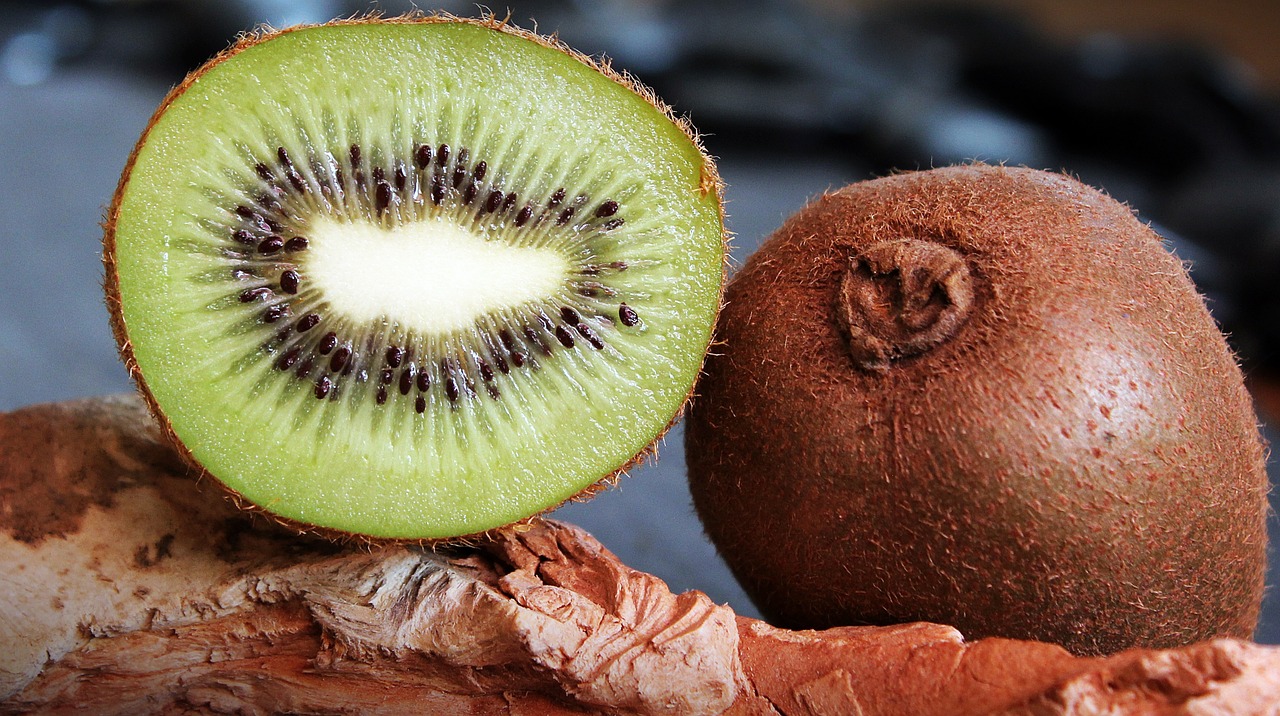
7 Reasons Why You Should Not Ignore Kiwifruit
Kiwifruit is not really that popular in India, though I personally feel it should be. A native of China, the kiwifruit is a dynamic fruit loaded with nutrients.
In India, it has gained some exposure as a fruit that can help manage patients with dengue fever. But that’s just the tip of the iceberg.
Today, I will discuss the various reasons why you should never ignore the kiwifruit when you are out shopping.
The Kiwifruit
The kiwifruit is the fruit of the woody, deciduous vine belonging to the genus Actinidia. It was previously called the Chinese Gooseberry or mihoutau, being native to China for centuries.
Over the years, it has been grown in New Zealand, Chile, France, Japan and the United States, and is exported globally to various countries, including India. This explains its high cost in our country (an average single kiwifruit in India costs around Rs 25).
The fruit is not always green in color. There are different variants, some of which are golden or yellow. The one we get in India is Actinidia deliciosa, a green fruit with tiny, crunchy black seeds and a hairy outer coat.
Health Benefits Of Kiwifruit
As an ancient Chinese medicine, kiwifruit was used to cure digestive problems, hemorrhoids (piles), acidity and rheumatism (joint pains).
Nutritional Composition of Kiwifruit (table)

Source Of Vitamin C, E and Folate
When you bite into the fruit, you will be hit by a sweet, tangy note instantly. You might even grimace in pleasure.
Thats because the kiwifruit is rich in vitamin C. It contains around 80 mg to 120 mg of vitamin C per 100 grams of fresh fruit.
Vitamin C is an essential vitamin that the body gets only through diet. It is essential in the synthesis of collagen, which is responsible for keeping our skin and cartilage healthy.
Our recommended daily allowance (RDA) for vitamin C is around 70 – 90 mg per day, with an upper limit of 2000 mg daily. However, consumption of over 1 gram per day does not provide much benefit, as less than 50% will end up being absorbed.
It is also important in the synthesis of numerous hormones and in DNA synthesis.
Of course, with the recent COVID-19 infection affecting humans globally, vitamin C has been in the spotlight as a powerful immune booster, which it is.
The vitamin C also helps in better absorption of iron from the diet. So if you are low in iron or have anemia, then including kiwifruit with your iron rich diet can be very helpful.
An interesting study was published looking at kiwifruit and how it could improve vitamin C levels. In this study, the subjects were asked to consume half a kiwifruit daily for 4 weeks, then 2 kiwifruits daily for 6 weeks, and then 3 per day for another 4 weeks.
At the end of the study, they found that while half the fruit helped elevate levels of vitamin C in the blood, a whole fruit would be required to get the required levels. With 2 fruits, vitamin C levels reached ‘saturation’ level, and 3 fruits per day had no additional benefit.
In short, if you wish to boost your vitamin C intake and blood level, have a kiwifruit every day.
In addition to vitamin C, it is also a good source of vitamin E and folate. Along with vitamin C, vitamin E is a powerful antioxidant and fights free radicals and subsequent damage to vital organs, skin and hair.
Folate is required for normal blood production and in protein synthesis. It is an essential nutrient in pregnancy as it is responsible for the fetal spinal column development.
Useful In Hypertension
In a study comparing the effect of consumption of 3 kiwifruits per day versus foods rich in antioxidants, researchers found that the former group had a 11% reduction in their angiotensin converting enzyme activity level. This enzyme is responsible for hypertension, and is often targeted in medical therapy. Overall reductions were around 10 mmHg in systolic and 9 mmHg in diastolic blood pressure.
Normal levels of potassium in the blood are essential to keep the heart pumping efficiently.
Kiwifruit is a good source of potassium, coming a close second to banana among the fruits. It is naturally low in sodium, containing only 3 grams per 100 gram of fruit.
This makes it a good fruit to eat if you have high blood pressure. It may have some benefit in lowering your blood pressure, and this has been seen in some smokers.
That being said, most studies have only shown a ‘trend’, and not a significant change in blood pressure. Don’t rely on it to bring your blood pressure down naturally to normal values.
However, I recommend avoiding it if you have kidney disease, as potassium can accumulate in the blood if consumed in high quantities.
Improves Your Digestive System Health
Constipation and irritable bowel syndrome (IBS) are common problems in India. Treating IBS can be quite difficult.
In a study looking at regular kiwifruit intake over 4 weeks by healthy elderly individuals, researchers found that those with constipation had a better stool frequency, better stool volume and softer stools. This makes the fruit useful in managing constipation.

Similarly, in individuals with IBS, a study evaluating intake of 2 kiwifruits per day for 4 weeks improved bowel function significantly.
This improvement in gut function may be related to the high quantity of soluble and insoluble fiber it contains. It contains one third soluble and two-thirds insoluble fiber. It also has the ability to hold onto water and swell up in the gut, helping bulk up the stools and in easy evacuation.
There are many other explanations on how kiwifruit improves digestive health, and I will not delve on it any more as it would just complicate this article.
If you have problems with your digestion, or have a history of constipation, try eating a kiwifruit every day. You should see an improvement in a few weeks.
Kiwifruit Is Safe In Diabetes
Green kiwi fruit which is available in India has a GI index of 39, which is low. Only 12% of the fruit is carbohydrate.
In other words, eating it if you have diabetes is not really a problem. It will not increase your sugar levels much.
Studies have found that the primary sugar in kiwifruit is fructose. This, in addition to the high fiber content in the fruit, helps keep blood glucose levels in check.
Improves Cholesterol
Kiwifruit does not contain any cholesterol. Interestingly, when it comes to metabolic parameters, kiwifruit can help lower your cholesterol.
In one particular study , regular consumption of 2 kiwifruits a day over 4 weeks improved HDL values (good cholesterol) and lowered triglyceride levels (bad cholesterol).
However, it did not have an effect on LDL levels.
Another study found that even consumption of one fruit a week had the same effect.
It is possible that the elevation in HDL cholesterol levels may be related to the polyphenols and vitamin C present in kiwifruit. The green variety increases the levels of apolipoprotein A1, a protein attached to HDL cholesterol.
Protects The Heart
I have already mentioned how HDL cholesterol levels increase with regular kiwifruit intake. This can protect the heart against heart attacks.
By lowering blood pressure, it keeps the heart under a lower deal of stress.
The vitamin C and polyphenols also benefit heart function in various ways.
However, these are not the only ways.
Another property of this fruit is its ability to lower the ‘stickiness’ level of cells called platelets. One study showed that it reduced this by around 15%. Some have gone so far as to say it is as good as an aspirin tablet.
By lowering this, it can reduce the chances of clots forming within heart arteries, a phenomenon that is responsible for heart attacks.
There is a school of thought that kiwi fruit can increase platelet count in dengue. This is not clinically proven. That being said, there is no harm in eating it if you have dengue fever, as the vitamin C may be beneficial.
Anticancer Effects
Among the many foods that can naturally lower cancer risk, kiwifruit may have some benefit too.
However, the studies are limited.
Most studies conducted to see if it has a property of lowering cancer are lab based studies looking at DNA injury and subsequent repair through the vitamin C component of the fruit.
Also, the high fiber content and digestive tract protective effects may benefit against colon cancer.
Other Effects
There may be some role for kiwifruit in healing of acute burns. This is because it has antibacterial properties, along with the property to stimulate new blood vessel formation.
This information stems mostly from rat studies.
Risk Of Allergy
One disadvantage of kiwifruit is that it can cause allergic reactions in some people when they consume it. However, the reaction is not that severe.
Some adults may experience an itchy throat and a bloated stomach. Itching skin (urticaria) and even a more serious reaction may occur, albeit rarely.
Closing Remarks
The kiwifruit is a nutritional czar, if there ever was one. If you ever get a chance, try and chow down on one now and again to reap the multiple health benefits.

Curry Leaves – A Powerhouse Of Health Benefits
Our versatile Indian cuisine incorporates curry leaves in most dishes, especially in the South of India. While it adds flavor and an aroma to the food, it in fact has numerous health benefits that are often overlooked.
Curry leaves, also called Kadi Patta, have amazing health benefits. Let’s take a look at them here.
What Are Curry Leaves?
Curry leaves, also called Murraya koenigii in the world of biology, is a herb that is widely used in cooking. It originates from the curry tree.
Curry leaves contain numerous nutrients, including proteins, fiber, carbohydrates, minerals and numerous vitamins. It also contains alkaloids like murrayastine, murrayaline, pyrayafoline carbazole alkaloids.
Traditionally, curry leaves have been used as a medicine to improve digestion and appetite. It was also used as a treatment for diabetes. Besides this, it has been used in treating loose motion, blood disorders, worms, piles and open wounds.
The health benefits of curry leaves are numerous. Let’s take a look at what it can do for your health.
- Water – 65 gm
- Protein – 7.4 gm
- Carbohydrate – 4.5 gm
- Fiber – 17 gm
- Fat – 1 gm
- Magnesium – 182 mg
- Potassium – 584 mg
- Sodium 18.6 mg
- Selenium – 17.25 mg
- Iron – 9 mg
- Calcium – 659 mg
- Vitamin C – 24 mg
- Vitamin E – 1.8 mg
- Beta Carotene – 7.6 mg
Curry Leaves Can Lower Cholesterol
There is a fair bit of data that suggests that curry leaves can lower your cholesterol levels.
In one study conducted in diabetic rats, curry leaf extract administered over 1 month lowered both total cholesterol and triglyceride levels by 31% and 37% respectively.
Human studies have also confirmed the same. In a study looking at post-menopausal women between 45 – 65 years with high cholesterol, an addition of 5 grams of curry leaf powder to their lunch over 45 days –
- Lowered LDL (bad cholesterol)
- Increased HDL (good cholesterol)
- Lowered triglycerides (bad cholesterol)
It appears that curry leaves can lower cholesterol naturally. Munch on them when you get a chance!
Protection In Diabetes
The role of curry leaves in managing diabetes is rather complicated.
In diabetes, you will know that there is initially an excess of insulin secretion to try to control elevated blood sugar levels. Over time, the pancreas beta cells, which are responsible for this excess insulin production, become tired and exhausted. This leads to lower insulin levels.
Over a period of time, diabetes begins to affect multiple organs, including the heart, kidney, brain, eyes and nervous system.
Studies have found that curry leaf extracts can protect the beta cells of the pancreas, and normalise insulin levels. It also works on the way muscles utilise the glucose in the blood, increasing it’s uptake, improving muscle health and lowering glucose levels.
In a study conducted in diabetic male rats, regular oral administration of curry leaf extract reduced levels of urea and creatinine in the bloodstream. This means that it can protect the kidneys in diabetes.
Similar studies have found that these extracts can protect the nerve fibers as well, making it useful in preventing diabetic neuropathy.
It is believed that the presence of certain trace elements such as zinc, chromium, copper, iron, nickel etc. may be responsible for better blood glucose control.

Anticancer Effects
There are many foods that have natural anticancer effects.
The extracts of the bark of the curry leaf tree contain carbazole alkaloids called girimbine and acarbazone, which studies have shown to kill cancer cells in liver cancer.
It may also have some benefit in preventing colon and bowel cancer.
An Indonesian trial found that extract of curry leaves could kill HeLa cells, which are the cancer cells seen in cervical cancer.
Similarly, it may have a protective effect against prostate cancer.
Numerous anticancer mechanisms have been proposed, but most studies are animal studies or lab based studies and not human trials.
Liver Protection
You will know that high alcohol intake on a regular basis can destroy the liver. The carbazole alkaloids in curry leaves have been shown to have a protective effect on the liver cells.
In a study where rat livers were damaged by high doses of paracetamol, curry leaf extract fed to these rats improved liver function and appearance of the tissue under the microscope. This effect is brought about by it’s powerful antioxidant properties and ability to lower inflammation.
Similarly, a improvement in liver enzymes is also seen in rat studies.
Antibacterial And Antifungal Properties
Fighting bacterial and fungal infection with medications all the time may not always be possible.
Extracts of curry leaves have been found to possess antibacterial properties. They can fight against common bacteria such as E.coli, staphylococcus, streptococcus and proteus.
Essential oils derived from the leaf has been shown to be effective against powerful bacteria such as Pseudomonas.
The alkaloids and flavonoids that are present in curry leaf can prevent fungal infections as well. It appears to have a negative effect on a wide variety of different fungi.
Curry Leaves Protect Your Brain
Alzheimer’s disease and Parkinson’s disease are worrying clinical conditions that affect the brain and rob you of your dignity.
Studies have found that curry leaves can improve memory and learning.
Other Benefits
Besides what I have listed above, curry leaves have numerous other benefits.
For example, the oils derived from the leaves can be incorporated in creams and used to cure skin diseases such as acne, boils, itching and athlete’s foot.
Curry leaves are rich in vitamin A and calcium, so eating these can strengthen your bones as well.
Of course, don’t forget how awesome your food tastes when you add these leaves to it!
Where To Buy
Curry leaves are available with your local vegetable vendor or supermarket.
You can buy curry leaf powder online on Amazon here.
Closing Remarks
There is no doubt that there are numerous health benefits of curry leaves. Make sure that you include them as a part of your regular diet.
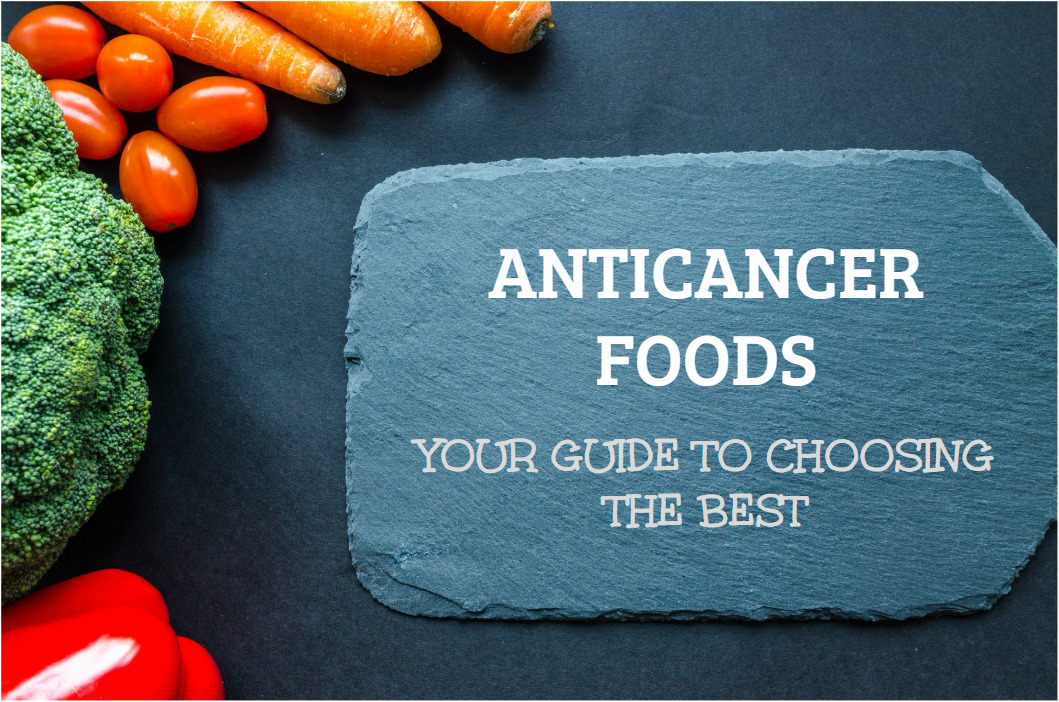
Anticancer Foods – Your Guide To Choosing The Best Ones
Anticancer foods – does such a thing even exist?
A diagnosis of cancer can be devastating, even if you know there is a cure. While treatments are many, prevention remains better than possible cures.
There are many ways one can reduce their risk of developing cancer. Avoiding smoking, lowering alcohol intake and regular exercise – all can help reduce your chances of developing cancer.
Probably the most important way to lower your cancer risk is consuming the right foods. I thought I would touch upon ‘anticancer’ foods, and hopefully by the time you reach the end of the article, you will realize that what you eat matters when it comes to cancer.
I will be touching upon foods that you can eat rather than spices like turmeric that have anticancer properties.
Lets go….
How Your Diet Can Increase Your Risk Of Cancer
First, I thought I would talk about how what you eat and how much you eat can increase your risk of cancer.
Low Fiber Diet
Fiber is an essential part of a nutritious diet. The more you eat, the more you protect your body against heart disease, digestive problems, and yes, cancer.
A diet low in fiber is generally seen in those who mostly eat non-vegetarian food. Meat and fish, while high in protein, lack any fiber.
Those who eat white bread or foods made from refined flour (biscuits, bakery items etc) also get no fiber in their diet.
If you recall, in an article elsewhere, I have spoken of soluble and insoluble fiber. Soluble fiber mixes with water in the gut, forming a gel that coats the inner lining of the bowel. This coating prevents harmful cholesterol and excessive sugar from being absorbed by the gut.
This has a protective effect on the body.
Insoluble fiber helps maintain a healthy digestive tract. It prevents you from becoming constipated.
Studies have found that consuming low fiber can increase your risk of bowel cancer.
Diet High In Red Meat
There are many of us who enjoy eating red meat regularly. The bad news is that there exists a strong link between red meat intake and colon cancer.
Remember that red meat, while high in protein, lacks fiber. When cooking red meat, compounds called heterocyclic amines are generated, which are carcinogenic (cancer forming).
Studies have found that these heterocyclic amines can increase the risk of breast cancer.
Overeating Is A Problem
We are a nation of over-eaters. Many of us can’t just stop a meal at a main course alone. Some want a starter and a dessert with every meal!
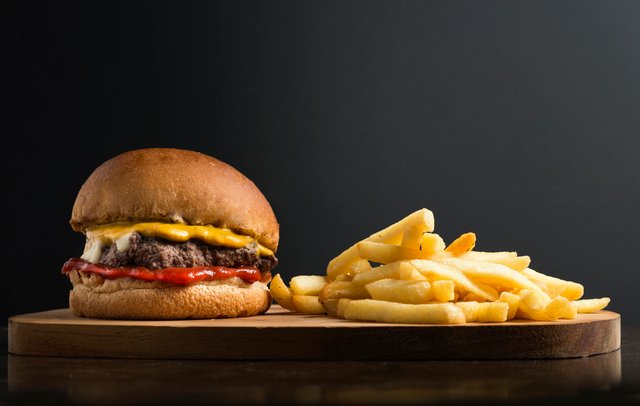
Ordering food in has become the norm, though it has come down a little during the current COVID crisis. Prior to this, people would order food almost every evening, mostly because their jobs were keeping them busy.
Not just that; eating more is being made more attractive through advertising. Portion sizes are expected to be large for the money that is spent on food.
The basic problem with how we eat in our country is that we consume too many calories. Some of our diets have over 3000 to 4000 calories sometimes, and we rarely realise it.
Even if you eat your veggies every day, having a high amount of calories in your diet on a regular basis can make you overweight.
Obesity has been estimated to cause 14% of all cancer deaths in men and around 20% in women.
In a study conducted in India, women who had a higher body mass index were more likely to develop breast cancer compared to those who had a normal weight.
Just by cutting down your calories and increasing your veggie intake, the risk of cancer can come down many fold.
High calorie foods include rice and rice based foods, fried items, snacks, bakery items and foods with added sugar in them.
Refined Flour Based Foods
Foods that are made from refined flour (maida) may be tasty, but they can harm your health. Refined wheat flour contents 78% less fiber, 74% less vitamins and 69% less minerals, according to the USDA Food Database.

In addition to this, refined flour based foods have a high glycemic index. This means that they increase the blood sugar values rapidly once they are eaten.
Various clinical studies have found that such surges in the sugar levels in the blood stream can increase the risk of gastric cancer, endometrial cancer, ovarian cancer and even colon cancer.
Of course, it is not just refined flour that can shoot up your sugars. Even simple cane sugar, honey and normal sugar we eat can have the same effect.
In other words, sugary foods that can increase your blood sugar levels rapidly can cause cancer.
So now that you have an idea of what foods can increase your risk of cancer, let’s take a look at some anticancer foods you could include in your diet.
Best Anticancer Foods You Can Eat
Here are some of my favorites –
Flax Seeds
Flax seeds are becoming a popular health supplement, mostly due to its high fiber content and presence of omega-3 fatty acids.
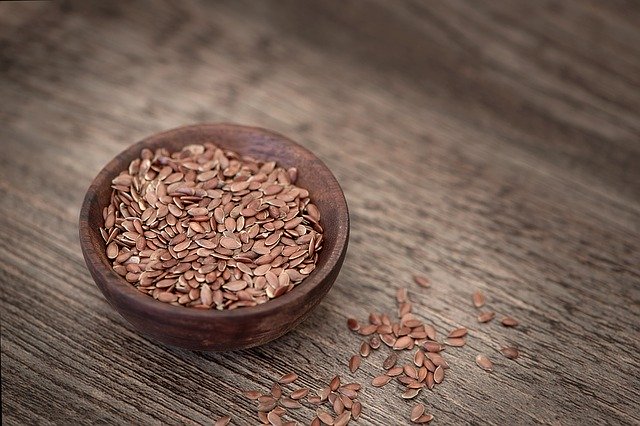
Flax seeds contain lignan – a compound that has anticancer effects. Mouse studies that have been conducted over years have found that a diet rich in flax seeds could lower the risk of breast cancer and it spreading as well.
There also appears to be a benefit of flax seed intake against prostate cancer in men. However, this effect is not seen with flax seed oil, but rather with whole flax seed.
Vegetarian Diet
Following a vegetarian diet can lower your chances of developing cancer. This has been proven time and again in clinical studies.
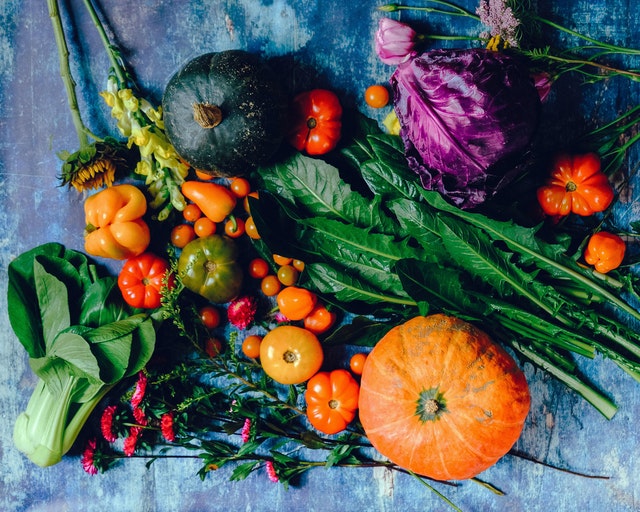
Numerous anticancer elements in veggies and fruits include vitamin C and E, folic acid, lycopene, dietary fiber, selenium and isoflavones.
In fact, the American Institute of Cancer Research states that multiple types of cancers can be prevented by just following a vegetarian diet.
- Oral cancer
- Cancer of the pharynx
- Esophagus (food pipe) cancer
- Breast cancer
- Stomach cancer
- Lung cancer
- Colon cancer
In recent years, there has been a move towards ‘veganism’. This is a diet made of just vegetarian food, but with no dairy products (milk, curds, cheese etc). Generally, the risk of cancer is not lower than what a vegetarian diet confers, though it seems to have more benefit in prostate cancer.
Let’s take cruciferous vegetables – broccoli, cauliflower and cabbage. These are probably the best anticancer foods, as they are rich in sulforophane, which has anticancer properties. Of these, broccoli is the most powerful.
Regular consumption of cruciferous veggies can lower your risk of breast cancer, Non-Hodgkin’s Lymphoma, lung cancer and even prostate cancer.

Tomatoes contain lycopene, a compound that has protective effects against prostate cancer, and reduces the risk by up to 40%. Cooked tomatoes have more lycopene compared to raw ones, so better to choose the latter.
I often advise patients to eat different colors of vegetables. This is because different colored veggies have alpha and beta carotenoids, which have powerful cancer fighting properties. Carrots, carrot juice and pumpkins are amazing sources. Capsicum (traffic light – red, green and yellow) also contain carotenoids.
There remains a dictum of eating 5 portions of fruit and vegetables every day. I am not sure where this number really came from, but I guess keeping this in mind makes it easier to ensure you get what your body needs. The more you eat, the better it is for you.
A single portion is a cupful of vegetables or a single fruit.
Foods Rich In Vitamin C
Citrus fruits, especially amla (gooseberry), are excellent sources of vitamin C. Vitamin C has powerful antioxidant and anticancer effects, and is sometimes used as an intravenous medicine in cancer therapy.
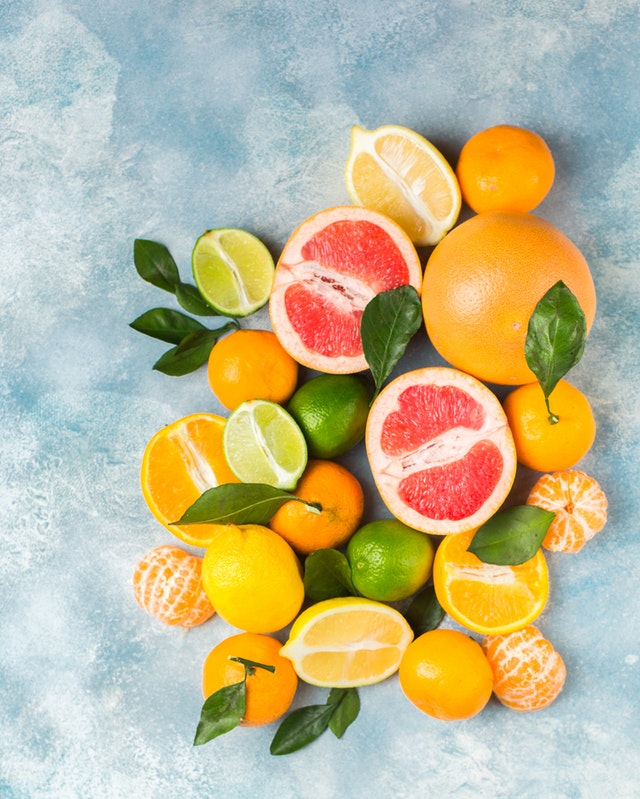
Doses given in cancer treatments are significantly greater than what is prescribed as a daily supplement of vitamin C.
How Much Fruits And Vegetables Should You Eat For Anticancer Effects?
It is advised by some experts to have 10 servings of vegetables and 4 or more servings of fruits a day to protect yourself from cancer.
Honestly speaking, it might be quite hard to keep track of that.
If you really want to reap the anticancer effects of foods, then you need to include them in good quantities in your daily diet.
What Is The Best Anticancer Diet Then?
In a nutshell you should include all the following that I have listed in the table below:
- 10 servings of vegetable – include cruciferous veggies, capsicum and carrots
- 4 servings of fruits of your choice
- A good amount of green leafy vegetables
- Low fat diet
- High fiber foods – oats, whole grains
- Avoid red meat
- Include fish or take an omega 3 supplement
- Avoid refined flour based foods (bakery items)
- You may need supplements of vitamin D and B12
Closing Remarks
You could lower your risk of developing cancer with these anticancer foods. Choose well and stick to not just a good diet, but also an exercise routine.
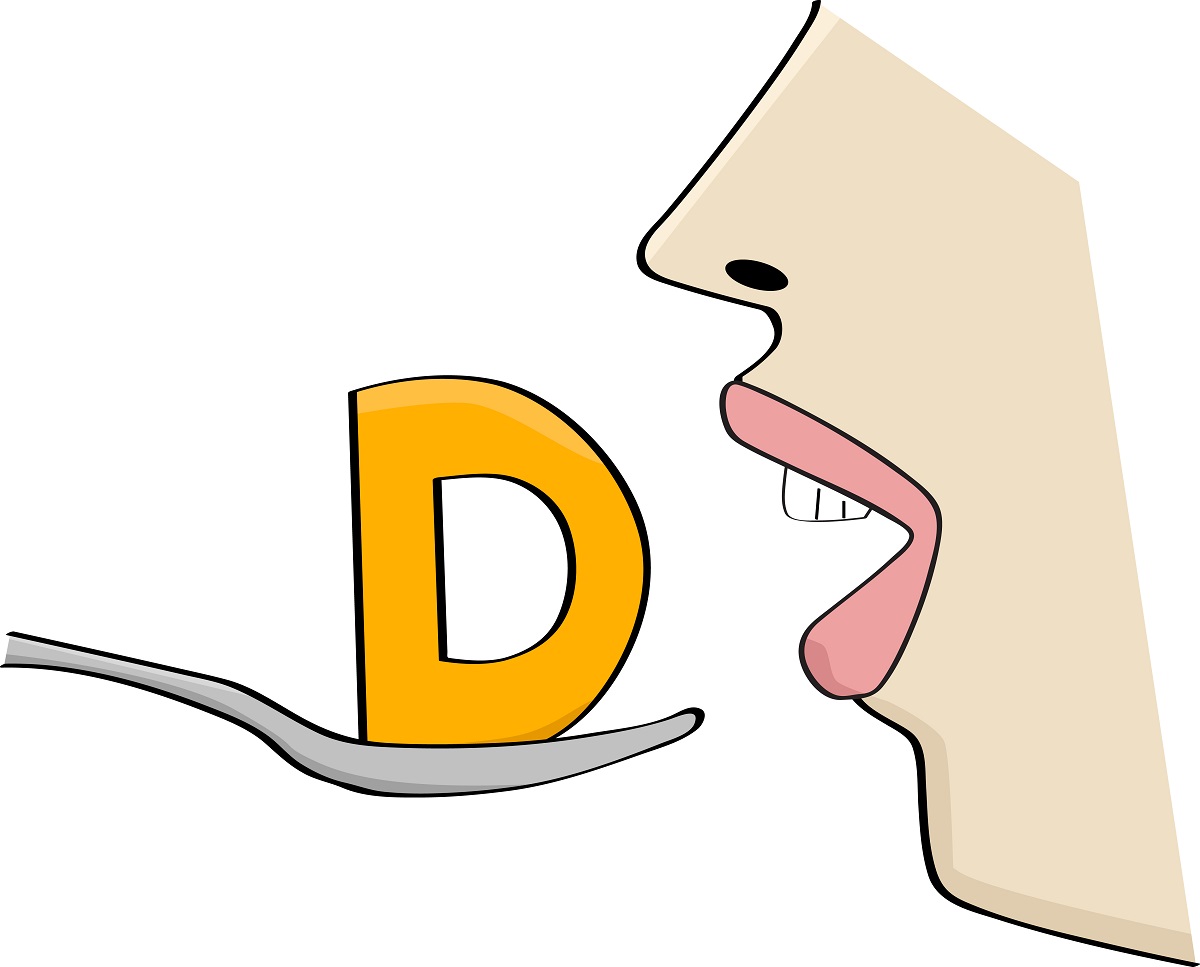
Vitamin D and COVID-19 – Can It Lower Your Risk?
The COVID-19 crisis is giving many sleepless nights. Many are looking for ways to build up their immunity in order to lower their chances of getting infected. Reports suggest a relationship between vitamin D and COVID infection – one where vitamin D protects you against it.
I thought I would explore the existing literature today.
The COVID-19 Crisis
You will be aware that the COVID-19 infection, also called SARS CoV-2, is a viral infection that is sweeping our planet and affecting many. It acts through numerous mechanisms, leading to fever, cough, loss of taste and smell, body pain, and in some cases diarrhoea and vomiting.

Even those taking precautions are getting affected, mostly because some people around them are not.
The only way to prevent this infection effectively is to practice social distancing, wash your hands regularly with soap and water at home, use a sanitizer with at least 70% alcohol when you are out of the house, and of course, to wear a tight-fitting mask.
Staying healthy is also essential to build up immunity against the coronavirus infection. Regular exercise, a healthy balanced diet with plenty of fruits and veggies, and a good night’s sleep is of paramount importance.
A good intake of vitamins and minerals is needed to keep our immune system at full guard. Vitamin D has a role to play in this.
The Role Of Vitamin D In Immunity
Vitamin D has been primarily recognised as a vitamin essential for bone health. Vitamin D and calcium work as a pair in strengthening our bones, keeping them healthy and preventing fractures.
Interestingly, vitamin D also helps boost your immunity. This is in fact old news, with vitamin D supplements (in cod liver oil) being previously used to treat lung tuberculosis .
Our immune system consists of various types of cells. These include monocytes, dendritic cells, B cells, T cells, and macrophages. Each of these have a role to play when fighting viral infections, including COVID-19.
On the surface of these cells are tiny receptors called Vitamin D receptors, or VDR. When the immune cells move to sites within the body where there is inflammation, the vitamin D binds to the VDR, forming a complex.
This complex moves into the nucleus of the immune cell, where it modifies the genes and produces antimicrobial compounds like defensin and cathelicidin.
This phenomenon leads to lower production of harmful products called cytokines. Cytokines are generally released in large quantities in COVID-19 infection, overwhelming the body and leading to rapid deterioration of patients.
This burst of cytokine release is called cytokine storm. Vitamin D can lower this significantly.
There are many other mechanisms through which vitamin D can boost immunity. I will not be discussing them here as it is out of the scope of this article.
Vitamin D versus Common Cold
The common cold is probably the most ‘common’ infection us humans suffer from. Visits to the doctors are mostly due to runny nose and chest congestion, especially in the rainy and cold winter months.
Studies have found that a dose of 400 IU per day of vitamin D can build up immunity against chest infections. Doses up to 2000 IU per day have also been advised.
The benefits have been seen in both adults and children.
In children, a combination of regular vaccinations and vitamin D supplementation has been found to boost immunity against respiratory tract infections. It also reduces the chances of needing antibiotics.
However, the benefit may not be seen in all.
For example, in a study looking at adults with mild to moderate asthma who were taking steroid inhalers, addition of vitamin D supplements did not help reduce cold or severity of it.
The maximum benefit of vitamin D supplementation to boost immunity against chest infections was seen in those who were deficient.
In general, combining vitamin D with vitamin C supplements can lower the duration and severity of the common cold.
Vitamin D has also been shown to have a protective effect against viruses such as the rotavirus and HIV as well.
Vitamin D and COVID-19
The levels of vitamin D that we have in our body reduces as we get older. Unfortunately, our chances of catching the COVID-19 infection increases as we get older too.
So is there a connection between vitamin D levels and COVID-19 infection?

There is a plethora of evidence that describes vitamin D supplementation as an effective way to prevent chest infections.
In a rather interesting study, it was found that people who lived in countries below 35 degrees northern latitude had a lesser chance of dying from COVID-19. This was because those that are above the 35 degree latitude had lesser exposure to sunlight, and hence more likely to be vitamin D deficient.
In another study looking at COVID-19 patients admitted to an ICU, researchers found that lower vitamin D levels amplified the symptoms of COVID-19.
In a very recent study, low vitamin D levels were found to worsen conditions (high blood pressure, heart disease etc) that would indirectly lead to lowered immunity and an ability to fight COVID infection.
In other words, if you have low vitamin D levels, topping it up with supplements could not only lower your chances of contracting COVID-19; it could lower the severity of the infection if you did. There appears to be a benefit of vitamin D supplements for children as well.
As is the case always, there are proponents of the opposite. The National Institute of Clinical Excellence (NICE) in the UK has extensively reviewed the available evidence , and categorically states that there is no strong evidence supporting a role of vitamin D supplementation in COVID-19.
What Dose Of Vitamin D Is Needed To Boost Immunity?
If you have ever checked your vitamin D level in a clinical laboratory, you will find that levels below 30 ng/ml are described as deficient.
Studies suggest that keeping your vitamin D level around 50 ng/ml is ideal to protect you against viral infections.
The recommended daily dose for vitamin D is around 600 IU to 800 IU a day. However, those that are deficient will require between 2000 IU to 4000 IU daily.
I generally recommend 2000 IU daily to keep levels at an appropriate value. Higher doses can cause abdominal pain, constipation, increased thirst, vomiting and high calcium levels.
Are Vitamin D Supplements Safe?
Generally yes. But you must bear in mind that vitamin D is a ‘fat soluble’ vitamin. This means that any excess ingested can accumulate in the body.
This can be harmful.
As such, 2000 IU a day is a safe dose to take. If you are deficient, you may need a higher dose. Talk to your doctor about what is right for you.
Should I Take Vitamin D Supplements To Prevent COVID Infection?
As vitamin D is only obtained through sunlight exposure, it is likely that you will need a supplement right now.
We are all locked up in our houses, and even sitting out on your terrace every morning may not give you the dose you need.
There are plenty of over-the-counter supplements of vitamin D available in the market. If you are confused about what to take, speak to your doctor.
Bottom Line and Closing Remarks
There appears to be a connection between vitamin D and COVID infection. There also appears to be a role in vitamin D supplements lowering your chance of developing COVID infection as well.
However, there is still data needed.
I personally feel that more randomized trials that look particularly at the relationship between vitamin D levels and COVID infection are needed. This will obviously take time.
When you get a chance, check your vitamin D levels in a lab and ask your doctor if you need supplements. In addition to possibly offering protection against the COVID-19 infection, it will most certainly keep your bones and muscles healthy.
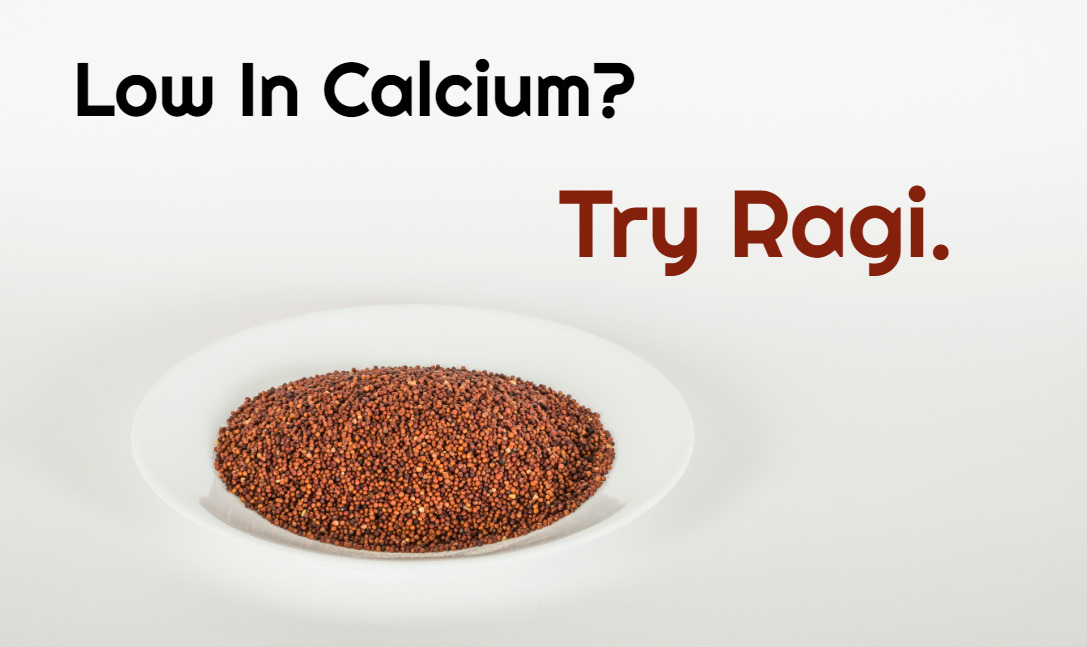
Low Calcium Levels? Time To Add Ragi To Your Diet
If you have low calcium levels, then you may want to consider a change in your diet. When doing so, remember ragi.
Ragi, or finger millet, is a commonly consumed food in south India. A staple food in some parts, ragi is eaten either in a cooked ball form (mudde), as a porridge or even as a roti.
What Is Ragi?
Ragi is a millet called Eleusine coracana, a crop with powerful nutraceutical properties. It is recognized globally as a super-cereal, with nutritional values of certain elements off the charts.
Not only is ragi high in protein, it is also packed with minerals and vitamins that are essential for the normal functioning of the human body.
Minerals include calcium, magnesium, manganese, phosphorus, zinc, sodium and potassium, among many others. It is rich in B complex vitamins and vitamin E as well.
Today, I will briefly discuss how ragi can be an excellent calcium source in your diet.
The Harms of Low Calcium
Calcium is the 5th most abundant mineral in the body. It makes up for 1.9% of our total body weight.
Low calcium levels in the blood, also called hypocalcemia, can lead to muscle cramps in various parts of the body. Thinning of the bones, also called osteoporosis, is also due to low calcium and vitamin D in the body. Osteoporosis makes the bones easily susceptible to fractures.
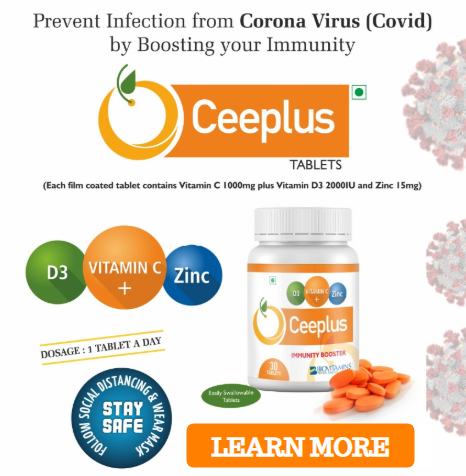
Those who have insufficient calcium in the diet can feel quite tired all the time. Sleep patterns might be disturbed, and insomnia can set in. Low energy levels become a problem.
Low calcium levels can affect your skin, making it dry and itchy. Your nails may become thin and brittle, leading the tips to break off time and again.
Calcium is an important part of our teeth. Low calcium in the diet or in the bloodstream can lead to brittle teeth and tooth decay.
Clearly, calcium has a role to play in keeping our body healthy. Making sure you get the right amount in your diet can help prevent numerous health problems.
Ragi As A Source Of Calcium
There are many food sources of calcium.
Many of us rely on regular cows milk and milk products (cheese, cream etc) to give us the calcium we need in our diet. Nuts such as almonds are also a good source.
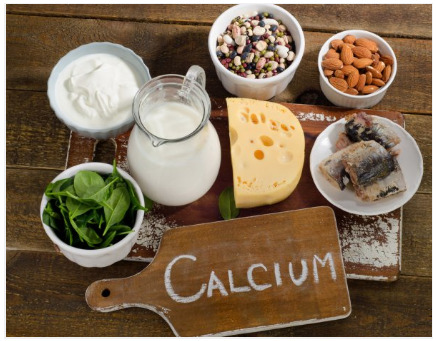
You might be surprised to hear that while cow’s milk has around 112 mg calcium / 100 grams of milk, ragi contains a whopping 350 mg in every 100 grams.
That’s over 3 times the calcium content of milk.
When compared to brown rice and wheat, ragi has 10 times more calcium in comparison.
But how well is it absorbed in the digestive tract?
Studies have found that <30% of the calcium we consume in our diet is absorbed. This is because a large part of the calcium we consume is bound to phytates and oxalates, becoming insoluble and therefore useless to the body.
In comparison to rice and maize, the calcium in ragi is much better absorbed. This is despite it having a higher phytate and oxalate content.
Many of us rely on supplements to maintain our calcium levels and to keep our bones strong. However, one study found that the absorption of calcium from ragi is significantly better than supplements available commercially.
In other words, if you want to get more calcium, eat ragi.
Children need good sources of calcium to help build strong teeth and bones. Food companies will advertise products such as cheese and other such snacks as a good source of calcium. While these might be palatable, in the long run they can be harmful to your child’s health, due to the salt and fats in them.
Instead, opt to give your child ragi. One study found that a single serving of ragi based foods can give your child 25% of the recommended daily need of calcium. Furthermore, children retain this calcium a lot better, mostly because their digestive tracts are much better.
Ragi In Diabetes
I just thought I would mention a sentence or two about ragi as a food for people with diabetes.
Ragi generally has a high glycemic index (104), but is packed with other nutritive elements that make it a good choice if you have diabetes.
In south India, ragi eaters tend to mix it with rice and consume it. This can increase the blood sugar levels in those with diabetes. It is advised to just have ragi (mudde, roti) alone, instead of mixing it with rice.
Ragi contains polyphenols, which are believed to have some role in keeping blood sugar levels under control.
In one study looking at patients with type 2 diabetes, consumption of ragi lowered plasma glucose levels, as compared to a glucose rich meal.
But I must make one comment based on my experience here. Ragi has a glycemic index of 104, while white rice is 75. I have time and again found that patients who consume ragi based foods also have uncontrolled blood sugar levels. This is probably because they have made it their staple, and consume it 2 or 3 times a day. Stopping ragi and rice has drastically lowered their blood glucose levels.
As a general rule, if a diabetic patient is undernourished, then I recommend ragi in their diet. If a diabetic patient is overweight, I advise them against it.
Closing Remarks
When it comes to topping up your calcium levels, make sure you choose ragi as one of your foods. If it is not something you enjoy eating, then replace it with other calcium rich foods. Alternatively, you could speak to your doctor about calcium supplementation.
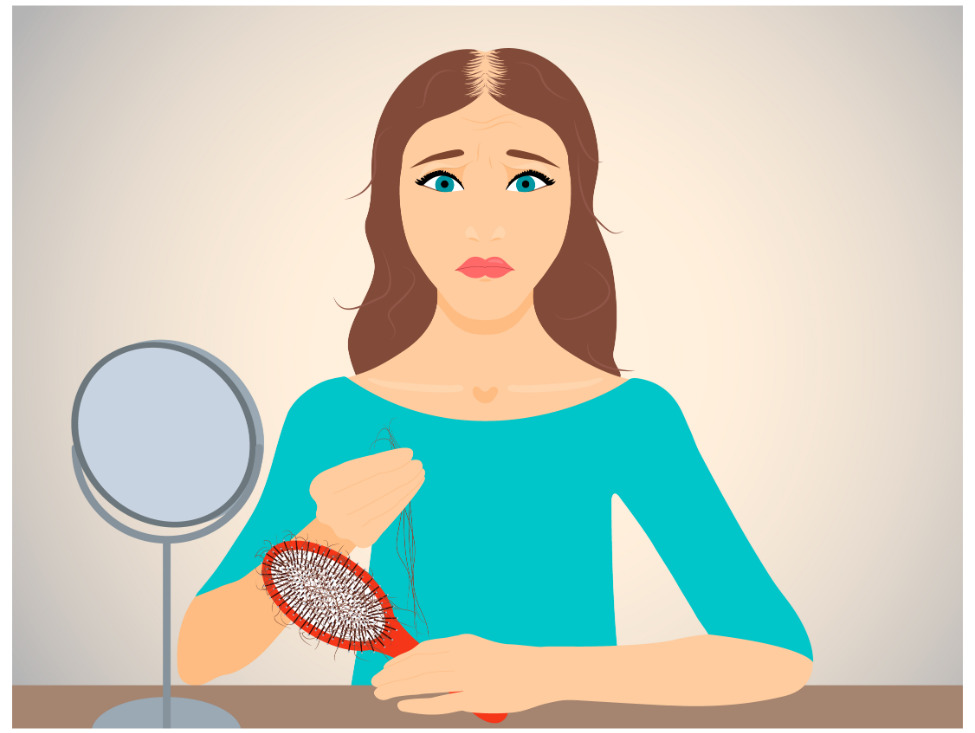
Baldness In Women – Why It Happens And How To Treat It
Baldness in women is a common problem in practice. Losing hair at a young age can not only change one’s appearance; it can also affect the individual psychologically.
For a long time, it was just men who were concerned about becoming bald. Over the last few years though, it is being recognised and being treated more actively in women.
Female pattern hair loss, or female androgenetic alopecia as it is known in the medical world, can majorly impact the quality of life of a woman.
Today, I will be discussing why women can lose their hair, and how it can be prevented and treated.
What Is Alopecia And Female Pattern Baldness?
Alopecia is basically a condition where there is loss of hair. There are different patterns of alopecia noted in literature.
The word ‘alopecia’ is derived from the Greek word ‘alopex’ meaning ‘fox’.
Yes, I was surprised too to read this.
Apparently the fox sheds a lot of hair. Hence the derivative.
Usually, baldness presents itself in the reproductive years of women. It starts and progresses very slowly throughout the younger years, though those seeking treatment usually lie within the ages of 25 to 40 years. Women between the ages of 50 and 60 years are also among those seeking treatment.
While there is a plethora of epidemiological data on the prevalence of baldness in women in the western world and the orient, Indian data is lacking.
What Causes Baldness In Women?
It all boils down to hormonal imbalances. Excess levels of testosterone in the bloodstream predisposes women to hair loss, while also increasing facial hair.
Get ready…… I am going all scientific now.
The hair grows in different stages. The anagen phase is the growth phase, catagen is the transitional phase, while the telogen phase is the dying or rest phase.
 Normally, the anagen phase lasts for several years (2 to 8 years), catagen for 2 to 3 weeks, and the telogen for around 3 months (though it can be variable).
Normally, the anagen phase lasts for several years (2 to 8 years), catagen for 2 to 3 weeks, and the telogen for around 3 months (though it can be variable).
A balance is maintained so that hair growth and hair loss are almost the same.
At any given time, around 10 – 15% of all hairs on your body are in the telogen phase, ready to be shed. On the scalp alone, around 80 to 90% of all hair are in the anagen phase, 10 to 20% in the telogen phase and around 1 to 2 % in the catagen phase.
In female pattern baldness, the anagen phase (healthy phase) is shortened to a few weeks or months, while most of the hair remains in the telogen phase. Around 20% or more hair are in the telogen phase, which explains the shedding when combing or washing.
Normally, the telogen phase is quickly followed by the anagen phase, so that your head is full of hair. However, in female pattern baldness, this time interval is a lot longer.
Within the hair follicle roots and the outer papillae of the skin of the scalp are receptors called androgen receptors, in addition to three different types of enzymes. Excessive androgen levels can stimulate androgen receptors and alter the enzyme levels, leading to patterned hair loss.
There is some belief that estrogens can also affect hair growth and shedding, though there is underlying controversy regarding this. I will not discuss this further here.

Of course, a family history of baldness can also increase the risk of hair loss in women. Women under the age of 40 years report a family history in around 40 to 54% of cases.
Hormonal problems such as hypothyroidism and excessive prolactin can also increase the risk of hair loss.
Certain BP medicines, epilepsy medicines, and prolonged use of antibiotics can all lead to hair loss. Alcoholism, antacids (ranitidine), kidney disease and digestive disorders can lead to baldness in women as well.
There are some essential nutrients that are required for healthy hair growth. I have listed them in the picture below.
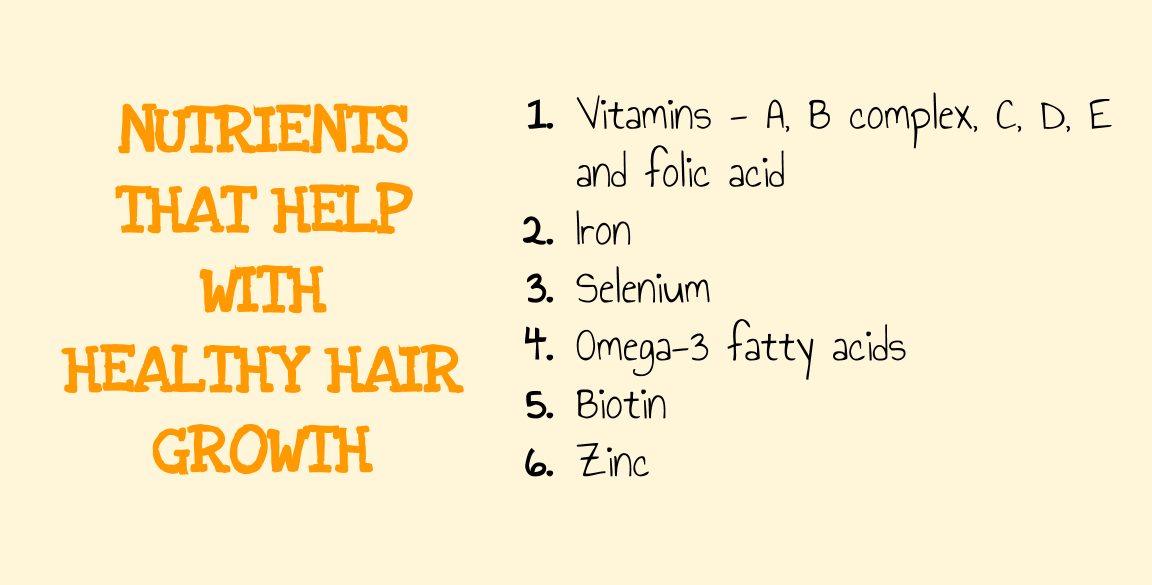
Patterns Of Baldness In Women
There are numerous methods of classification of hair loss in women – Ludwig’s classification, Sinclair’s classification and Olsen’s classification.
It is a little too complicated for this article. However, in a nutshell, there are 3 stages to hair loss. Stage III is usually seen after menopause.
It describes hair loss that starts just above the forehead, then extending towards the middle aspect of the head, finally spreading out. Hair is generally preserved over the temple area. After menopause though, hair loss can extend to the rest of the scalp.
Recently, I have had a few young women visit with hair loss starting in their adolescence. The pattern of hair loss is the same.
Diagnosis Of Hair Loss In Women
If you are a woman who is experiencing hair loss, then make sure you visit a dermatologist or your physician.
A simple examination of the hair with a dermoscope can reveal the characteristics of the hair in great detail.
A ‘pull test’ can also be helpful. Here, slight traction is exerted on the scalp hair, and the number of hair that comes off is determined. Traction is exerted using the thumb, index and middle finger. An estimated 50 to 60 hairs are grasped and pulled. If more than 10% of the hair is pulled away (around 6 hairs or more), then the test is positive. Less than 6 is normal.
A trichogram is a test where around 50 to 100 hairs are examined with a light microscope. The test helps determine what phase the hairs are in. This may be performed by the dermatologist.
Blood tests have some role in determining the cause of baldness in women. Vitamin D levels, thyroid hormone levels, iron studies, testosterone, estrogen, prolactin and sex-hormone binding globulin levels can provide some clues, but not always.
The most common association of female pattern baldness is polycystic ovarian disease. An ultrasound scan of the ovaries can confirm that.
Treatment For Hair Loss In Women
Any associated conditions will be treated first. For example, if you have thyroid disease, then you will have tablets for that.
A popular medicine for hair fall is minoxidil. It is available in the form of a solution and is prescribed by a dermatologist. Other medical treatments such as melatonin, platelet rich plasma and micro-needling exist, and a discussion on this is out of the scope of this article.
Natural Ways To Increase Hair Growth
Are there any natural ways to increase hair growth? There are plenty.
When I talk natural, I mean food. Spinach, eggs, berries, fish, avocados and many other foods can help your hair grow. I have included a short list in the table below.
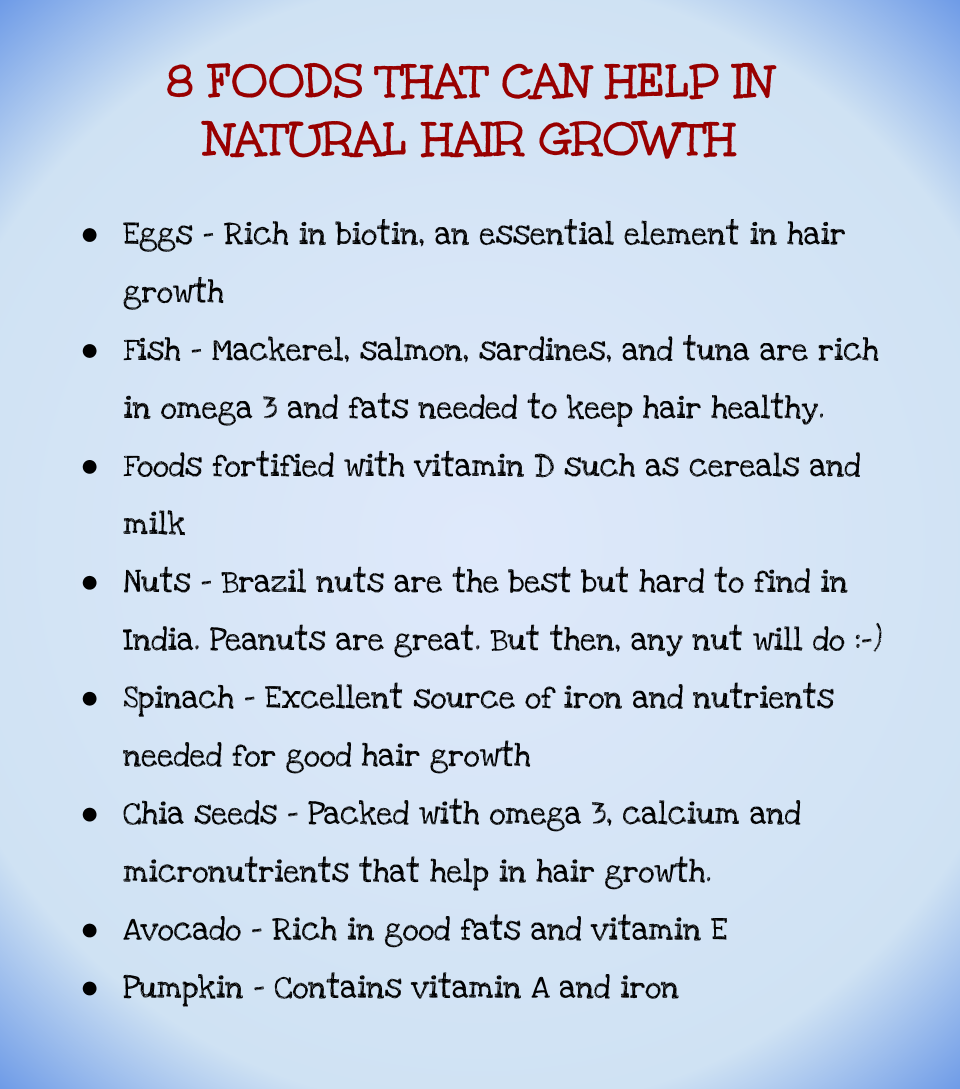
Probably one of the best foods to help with hair growth is eggs.
Studies have shown that the protein in eggs contains biotin (vitamin H), which is an essential element to promote hair growth. Biotin is also naturally produced in the body by the bacteria in the intestine.
However, make sure you have your eggs cooked, as raw eggs have avidin, which can bind to biotin and lower its concentration in the body.
Foods that are rich in iron can help to some extent. Green leafy vegetables (especially spinach), beetroot, lentils, cashew nuts and potato are all good sources of iron.
Zinc rich foods include non-vegetarian sources (chicken, fish, beef) mostly, though mushrooms, lentils and oats also contain a good quantity of it. Milk and cheese are also good sources. Whole grains contain phytates that bind to zinc, lowering its absorption from the gut.
Antioxidants such as vitamin C can prevent hair follicle damage from free radicals, and consuming foods that are rich in this vitamin can help prevent excessive hair fall. Berries (especially amla) are a rich source of vitamin C. Vitamin C is also essential to produce collagen, which helps keep hair strong (remember the shampoo ads?!!).
Do Natural Ways Really Work?
It’s a little hit and miss.
There are those who gorge on fresh fruits and vegetables, and still lose hair. It is a little deflating to hear I know, but not everyone will regain their hair with natural methods. Medication and hair loss supplements will be needed some time.
Always make sure you take any supplements or hair loss products after approval by your doctor. Excessive intake can lead to side effects and toxicity.
Closing Remarks
Baldness in women is a worrying problem to the affected individual. It can lower self esteem and affect quality of life. There are many reasons why it might happen, and while treatments work, natural ones have a limited role.
